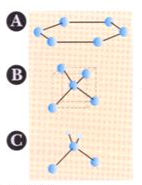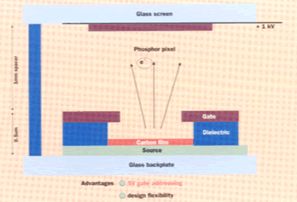| enginuity |
|
back | contents | previous | next |
The diamond fields of Cambridge
A new type of semiconducting material, tetrahedrally bonded amorphous carbon or ‘diamond-like’ carbon, has been developed and its use for electronic applications is now being assessed. It can be deposited in the form of thin films by condensing carbon vapour from a filtered cathode vacuum arc or by laser ablation of carbon. The Thin Films Group at the Department of Engineering, headed by Dr Bill Milne, was the first group of experimenters to successfully dope this type of material with nitrogen to give it the semiconducting properties necessary for electronic applications.
The group is currently examining the use of such materials for cathodes, with a view to using them for the production of flat panel displays in either portable computers or – the ultimate in fulfilling consumer desires – TV screens that can hang like pictures on the wall.
 |
|
The principle behind this application is to use electron emissions from a matrix of microcathodes placed in a vacuum behind a phosphor screen to create the picture points or pixels (a ‘field emission’ display). This will obviate the need for the scanned beam used in a normal TV tube and the large cathode-to-screen distance which that entails. A 1mm gap will be all that is required between the screen and the cathode matrix.
Amorphous diamond-like carbon seems eminently suitable for this application, as the innate chemical inertness of carbon will prevent emissions from being reduced by contamination, and the material has a low electron affinity making it capable of producing high current densities at low voltages from a flat rather than a pointed surface. These features are attractive in producing long cathode lifetimes. This work, which is attracting worldwide interest, is currently being funded by the EPSRC.

Principle of field emission display using carbon as the cathode.
For further information, please contact Professor Bill Milne, on (01223) 332757 or John Robertson, on (01223) 332689.
| number 5, summer '96 | back | contents | previous | next |